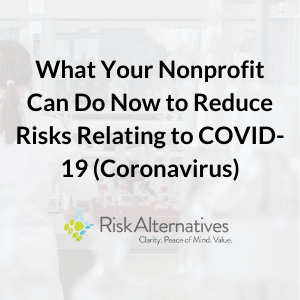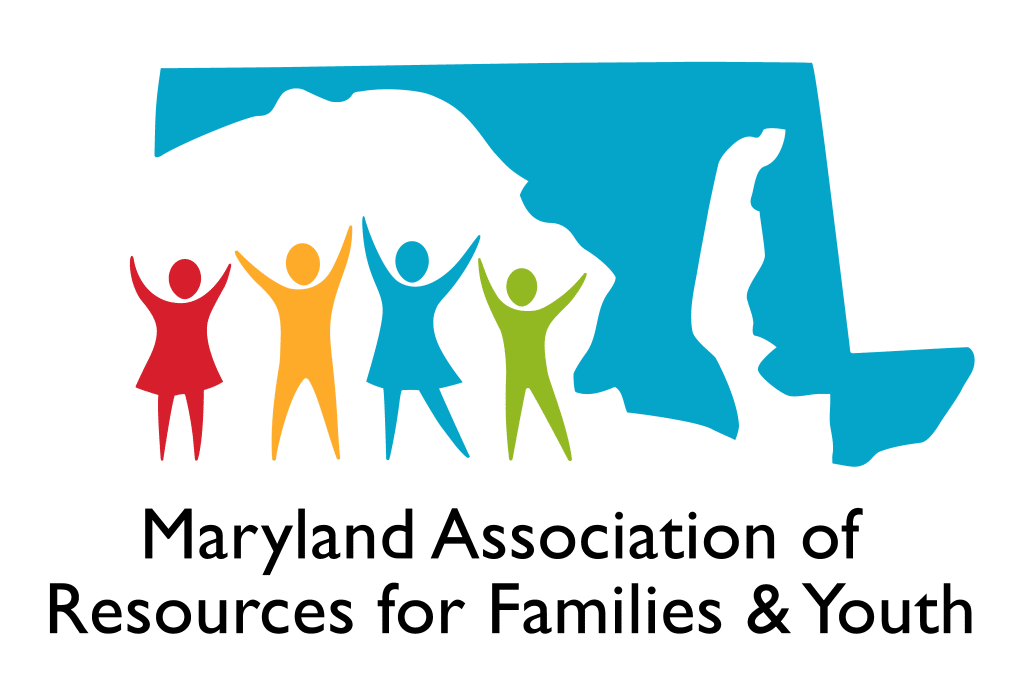The following blog is from Ted Bilich, CEO of Risk Alternatives, an organization that trains organizations to use risk management and process improvement tools. You can find their original post on their website.
Coronavirus headlines are alarming. Many communities will be affected even if the spread of the virus remains contained. Beyond handwashing and other competent advice you’ve read over the last weeks that may help prevent the spread of illness, what steps should you take now to protect your staff and the people who depend on your services? This post will answer that question.
Nonprofits Have Special Needs Concerning Coronavirus
Coronavirus creates special issues for the nonprofit sector. Nonprofit organizations often work with beneficiaries who are themselves at substantial risk. Such populations may be more vulnerable to disease and less able to treat themselves because of a lack of health insurance or poverty. Furthermore, nonprofits often rely on public events for fundraising. Canceling such events, while perhaps prudent (see below), comes with high costs. Furthermore, nonprofits often operate with limited financial reserves. As a result, nonprofit risk management is not simply a good idea. In today’s environment, it’s essential.
As frequent flyers know, you need to put on your oxygen mask before helping your child. The same logic applies to preparedness for coronavirus or other potential business interruption. Protecting your 501(c)(3) is key to being there for your nonprofit beneficiaries.
To address coronavirus issues, we have created a special Coronavirus Nonprofit Risk Page. There, we we will provide links to information impacting the sector as we become aware of it.
In the meantime, here are some steps to take to manage your risks:
Communicate
Conflicting and confusing information is circulating about Covid-19. You cannot hope to be the primary source of information about containing the spread of the virus and tracking its spread. Still, employees, volunteers, and recipients of your services will look to your nonprofit for clear messaging about the impact of the coronavirus on your operations. Frequent (even daily) communication will reduce anxiety and fear.
Let Prudence Be Your Guide
The Harvard Business Review has published a must-read piece on leading an organization through the coronavirus challenge. Its underlying message is that businesses must act with prudence. When operating with substantial uncertainty, a leader should gather information from reputable sources and beware of hype and misinformation. In that vein, we have found a few references to be especially useful:
- World Health Organization Coronavirus disease (COVID-19) outbreak
- Centers for Disease Control and Prevention Coronavirus Disease 2019
- Worldometer – Coronavirus (provides charts on active and resolved cases and news about the spread, testing, and containment efforts)
As noted above, to help nonprofits address issues relating to coronavirus, we’ve created a Coronavirus Nonprofit Risk Page that we will periodically update with news and information about the disease and its impact on nonprofits and their subject populations. While that page will not be a substitute for the sources identified above, we suggest that you bookmark and visit it regularly.
Check Your Business Continuity Plan
If you have a Business Continuity Plan, review it with your staff. Does it contain current information, or does it need to be brought up-to-date? Does it need a section added to address the possibility of your entire team working from home? Does it list correct contact information for staff, vendors, government, and any social service agencies with whom your nonprofit interacts? Does it include the local health department or emergency management team contacts? Keep in mind that if agencies or businesses you work with also implement their remote work policy, cell phone numbers for key people will be critical, as will their email addresses.
If your organization does not yet have a Business Continuity plan, download our simple template to gather all of the critical details organized in one place. You may access it for free here.
Run Risk Scenarios
Assemble your leadership team or form an emergency preparedness task force with leadership and staff. Assess the possibility of unforeseen impacts on your workforce first, and then do the same with your service populations. Working together or in smaller groups, identify critical vulnerabilities in your ability to meet your mission. If your nonprofit provides diverse social service functions, have groups tackle each key population and program. If your work offers services in a way that concentrates those beneficiaries together (e.g., health services, critical food support, homeless or temporary shelters, after school programs) include guidance from local officials in your scenario planning. Keep in mind that scaling back non-essential services may help focus resources on your most important activities.
Consider Your Remote Work Policy
If you don’t have a formal remote work policy, keep a few things in mind. If your organization’s size requires that you have a Workers’ Compensation Policy, that policy likely extends to cover your remote workforce and will expose you to claims relating to employee accidents at their homes. You want to protect your employees and the enterprise. Reach out to your insurance company to be sure you have the necessary coverages and understand their recommended best practices.
The Council of Nonprofits and The Hartford Insurance company have good lists of issues to consider:
- https://www.councilofnonprofits.org/tools-resources/remote-workers-and-telecommuting-practices-nonprofits
- https://www.thehartford.com/small-business-insurance/liabilities-employees-work-from-home
There are many sample remote work policies on the web. You can also reach out to your HR consultant or vendor if you use one. We have included a few sample policies here:
- https://resources.workable.com/remote-work-policy
- https://www.shrm.org/resourcesandtools/tools-and-samples/policies/pages/telecommuting_policy.aspx
Pay Attention to Your Volunteer Workforce
One of the most significant potential impacts for your 501(c)(3) may involve services that depend on a volunteer workforce. Volunteers may choose to stay home rather than provide their usual level of support. What would happen if you lost participation by 10% of your volunteers? 25%? 75%?
You may want to create a matrix of your nonprofit’s most critical services and the minimum number of people required to support those services. What activities or services would your organization curtail if volunteer attrition becomes an issue? For critical volunteers with specialized skills, certification, or training, what steps can you take to keep them active? What legal issues may flow from a decision to keep volunteers engaged in your activities if they risk exposure? Do they need any additional or special equipment or supplies that you can order now?
Consider Supply Chain Interruption
If your nonprofit provides or needs specific goods to continue your mission at full capacity, how can you work now to secure supplies? Should you pre-purchase using rainy-day funds, work out agreements with government agencies or alternate suppliers for goods, or create a short term partnership with other organization(s) who have supplies and staff? Consider adding this topic to your scenario planning exercise for a thorough examination of options.
Make Informed Decisions About Events and Meetings
Unless your jurisdiction advises otherwise, you may be permitted to continue any events, meetings, or service functions involving groups as planned. Still, consider any liability that may flow from hosting an event during a time of substantial uncertainty about health issues. Regardless of your ultimate decision, let participants know how you will monitor the situation and notify them of any cancellations.
Share This Information
Because nonprofits are so important to our economy and the populations they serve, please share this post with other nonprofit leaders. Now more than ever, we need to take special steps to make sure the sector remains strong.
Blog Post: What Should Be Included In Our Nonprofit’s Annual Report?





